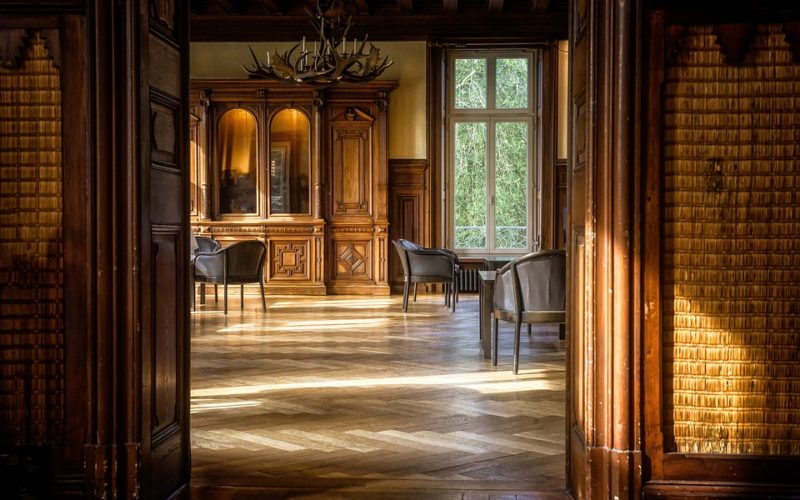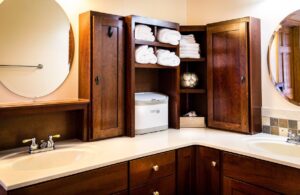Home renovations can often feel overwhelming, especially when budgets are tight. However, with the right approach, you can update your space without overspending. The key is to plan ahead and focus on the areas that will have the most impact. Start by identifying which parts of your home need the most attention and what your goals are.
For instance, prioritising essential services, such as plumbing upgrades or ensuring your boiler is in top condition, can save you money in the long run by preventing costly repairs. Frequent boiler services, for example, can ensure your heating system runs efficiently, reducing energy bills and maintaining comfort during colder months.
Repurpose and reuse existing materials
One of the most cost-effective ways to enhance your home is by repurposing and reusing materials. Before discarding old furniture or fixtures, consider how they could be transformed. For instance, an old dresser could be sanded and painted to serve as a new bathroom vanity or hallway storage solution. Similarly, reclaimed wood can add a touch of rustic charm to shelves or accent walls.
If you're upgrading your plumbing, consult a professional to determine if existing systems can be retrofitted or repaired instead of replaced entirely. This approach not only saves money but also reduces waste, making it a more sustainable option.
Focus on energy efficiency
Improving energy efficiency is another effective way to invest in your home while saving money over time. Start with small upgrades, such as replacing traditional light bulbs with energy-saving LED alternatives, or sealing gaps around doors and windows to reduce drafts. For larger savings, consider examining your central heating system or scheduling a powerflush, which removes sludge and debris from your radiators. This helps your system run more efficiently, improving heating output and potentially extending the lifespan of your boiler.
Additionally, government grants or incentives might be available in your area to assist with energy-efficient renovations, so always check to see if you’re eligible for financial support.
Do-it-yourself judiciously
While the ‘do-it-yourself’ approach can significantly cut costs, it’s important to be realistic about your skills and the scope of the job. Painting walls, assembling furniture, or minor landscaping changes are great for DIY projects and can save you from hiring professionals. However, tasks like rewiring electrical systems or complex plumbing updates should definitely be left to experts to avoid costly errors or safety hazards.
For example, if you're considering upgrading your bathroom plumbing, consult a professional to ensure it’s done correctly. Ignoring early signs of plumbing issues could lead to water damage, which is expensive and disruptive to repair.
Shop strategically for materials
Finding materials at lower costs requires a little legwork but can yield substantial savings. Look for discounts on building supplies at clearance sales, shop at reclamation yards, and consider online marketplaces where leftover materials from other projects are resold. Additionally, many home improvement stores offer discounts if you buy in bulk.
Opt for durable materials that will stand the test of time rather than cheap alternatives that may need to be replaced sooner. This strategy ensures you’re making the most of your investment, whether you’re purchasing new fixtures or upgrading your boiler.
Invest in preventative maintenance
One of the best ways to control costs during a home renovation is by investing in preventative maintenance. For example, ensuring regular boiler services can keep your heating system running efficiently. Neglecting maintenance can lead to serious issues that may turn into expensive repairs. Schedule basic check-ups with certified technicians and address minor problems before they escalate.
Additionally, a powerflush for your central heating system may seem like an unnecessary expense initially, but it prevents blockages and improves energy efficiency, which ultimately saves money in the long term. Proactively addressing these types of issues provides peace of mind and protects your property against unexpected expenses.
Set aside a contingency budget
Even with thorough planning, unexpected expenses can arise during any renovation project. Hidden issues, such as faulty plumbing, outdated wiring, or structural damage, can quickly increase costs. Setting aside a contingency budget (typically 10–15% of your total budget) ensures you’re prepared for surprises without derailing the entire project.
A well-thought-out approach to home renovation lets you make meaningful upgrades without exceeding your financial limits. Prioritising essentials like plumbing and heating alongside creative reuse of materials ensures your home improves both aesthetically and functionally while staying cost-effective.




















